
Saab AB is a Swedish aerospace and defence company, founded in 1937. Saab produced automobiles from 1947 until 1990 when the automobile division was spun off as Saab Automobile, a joint venture with General Motors. The joint venture ended in 2000 when GM took complete ownership. Between 1968 and 1995 the company was in a merger with commercial vehicle manufacturer Scania-Vabis, known as Saab-Scania. The two were de-merged in 1995 by the new owners, Investor AB. Despite the demerger, both Saab and Scania share the right to use the griffin logo, which originates from the coat of arms of the Swedish region of Scania.

Scania AB is a major Swedish manufacturer headquartered in Södertälje, focusing on commercial vehicles—specifically heavy lorries, trucks and buses. It also manufactures diesel engines for heavy vehicles as well as marine and general industrial applications.

Metro Cammell Weymann Ltd. (MCW) was once a major contributor in transportation manufacturing in the UK and Europe. It was established in 1932 by Metro-Cammell's bus bodybuilding division and Weymann Motor Bodies to produce bus bodies.

A transverse engine is an engine mounted in a vehicle so that the engine's crankshaft axis is perpendicular to the direction of travel. Many modern front-wheel drive vehicles use this engine mounting configuration. Most rear-wheel drive vehicles use a longitudinal engine configuration, where the engine's crankshaft axis is parallel with the direction of travel, except for some rear-mid engine vehicles, which use a transverse engine and transaxle mounted in the rear instead of the front. Despite typically being used in light vehicles, it is not restricted to such designs and has also been used on armoured fighting vehicles to save interior space.

The Alexander Dennis Enviro300 is a light-weight full-size single-decker bus that was built by Alexander Dennis and its predecessor TransBus International between 2001 and 2015. The design was the first of the new Enviro range of buses from TransBus and also the first bus to be built as an integral bus by TransBus.

East Lancashire Coachbuilders Limited was a manufacturer of bus bodies and carriages founded in 1934 in Blackburn, Lancashire, England.
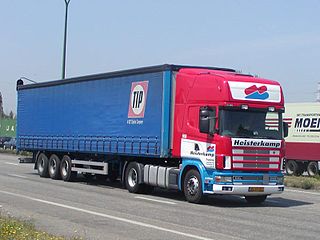
The Scania 4-series, is a truck model range which was introduced by Scania in 1995. It was the successor of the 3-series and it came in five engine combinations, three cabs and four chassis types. The 4-series was succeeded by the PRT-range in Europe in 2004, but production continued in Brazil until 2007.
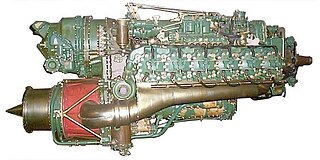
A turbo-compound engine is a reciprocating engine that employs a turbine to recover energy from the exhaust gases. Instead of using that energy to drive a turbocharger as found in many high-power aircraft engines, the energy is instead sent to the output shaft to increase the total power delivered by the engine. The turbine is usually mechanically connected to the crankshaft, as on the Wright R-3350 Duplex-Cyclone, but electric and hydraulic power recovery systems have been investigated as well.

The Wright Solar is a low entry single-decker bus body that was built on Scania L94UB and Scania K UB chassis by Wrightbus between 2000 and 2009. The Wright Solar Fusion is an articulated version.

The Scania K series is a series of chassis in Scania's city bus and coach range with longitudinally, straight-up mounted engine at the rear, replacing the K- and L-type (L94) chassis of the 4 series. The K series was first presented on Busworld 2005 in Kortrijk, Belgium, and models were available from 2006.

The Optare Olympus is a double-decker bus built by Optare. It could be built as a body available on Alexander Dennis Enviro400, Volvo B9TL or Scania N230UD/N270UD chassis with the 2-axle and 3-axle variants.

A single-decker bus or single-decker is a bus that has a single deck for passengers. Normally the use of the term single-decker refers to a standard two-axled rigid bus, in direct contrast to the use of the term double-decker bus, which is essentially a bus with two passengers decks and a staircase. These types of single-deckers may feature one or more doors, and varying internal combustion engine positions.

Scania, also known by its native name of Skåne, is the southernmost of the historical provinces (landskap) of Sweden. The former province is roughly conterminous with Skåne County, created in 1997. Like the other former provinces of Sweden, Scania still features in colloquial speech and in cultural references, and can therefore not be regarded as an archaic concept. Within Scania there are 33 municipalities that are autonomous within the Skåne Regional Council. Scania's largest city, Malmö, is the third-largest city in Sweden, as well as the fifth-largest in Scandinavia.
Porsche Engineering was established in 2001 as a wholly owned subsidiary of Porsche AG, with headquarters in Weissach, and traces its history back to 1931 when Porsche created its first engineering office subsidiary. Porsche Engineering Group has been re-organized into Porsche Consulting and Porsche Engineering.
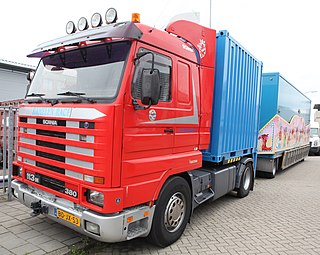
The Scania 3-series is a truck model range introduced in 1987 by Swedish truck manufacturer Scania. It is the successor of the 2-series.The 3 series came in a range of different engine sizes and horsepower from 9.0 litre 230 horsepower all the way up to 14 litre V8 500 horsepower engine. Production of the 3-series was stopped after the 4-series were introduced in 1995. The 3-series was the first series of Scania trucks to use the Streamline name, aiming to improve fuel efficiency and keep the styling up-to-date. The most notable changes were a redesigned bumper and front fascia incorporating a lower-drag grille design and full headlight bezels and an improved cab-side wind deflector design.

The automotive industry in Sweden is mainly associated with passenger car manufacturers Volvo Cars and Saab Automobile but Sweden is also home of two of the largest truck manufacturers in the world: AB Volvo and Scania AB. The automotive industry is heavily dependent on export as some 85 percent of the passenger cars and 95 percent of the heavy vehicles are sold outside of Sweden. The automotive industry and its sub-contractors is a major part of Swedish industry. In 2011 around 110,000 people were employed and the export income of 150 billion SEK accounted for 12 per cent of Sweden's export income. During 2009 128,738 passenger cars and 27,698 heavy vehicles were built in Sweden. Koenigsegg is also a famous swedish company which makes some of the fastest cars in the world, but also some of the most expensive. They make cars like:Koenigsegg Jesko, Gemera, 1:One, Agera, Regera etc.

The Scania Citywide is a series of integrally-constructed low-floor and low-entry buses manufactured by Scania. It was unveiled in 2011 as the successor to the Scania OmniCity and OmniLink. It consists of two models: the Citywide LF is built on the Scania N-series chassis, whereas the Citywide LE rides on the Scania K-series chassis. They are exclusively available in Europe, except in the UK and Ireland, where Scania chose to rely on Alexander Dennis, Irizar and other local bodywork manufacturers instead. It is assembled at Scania's plant in Słupsk, Poland. It is part of Scania's complete range of buses. The series shares some front styling details with the Touring coach, while most of the design is a simple facelift from its prior models.
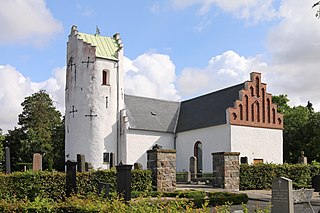
Hammarlöv Church is a medieval Lutheran church in the province of Scania, Sweden. It belongs to the Diocese of Lund.
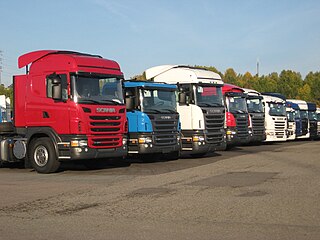
The Scania PRT-range, also referred to as new truck range or Scania's truck range, is the current range of trucks produced by the Swedish commercial vehicle manufacturer Scania. It was first introduced as the successor to the 4-series in spring 2004 with the high forward control cab Scania R-series, followed by the low forward control cab Scania P-series and bonneted cab Scania T-series later in the year. The bonneted model was discontinued in 2005. In 2007 the Scania G-series, a medium forward control cab was introduced and was derived from the R-series. The entire range is modular, giving a wide range of different configurations for different types of trucks. The trucks are available with engines ranging from a 9-litre I5 to a 16-litre V8, with the V8 only being available in the higher model. A second generation launched in August 2016, first was the Scania S-series being the first flat-floor model. In December 2017, a low-end version of the second generation, the Scania L-series, also launched.


















